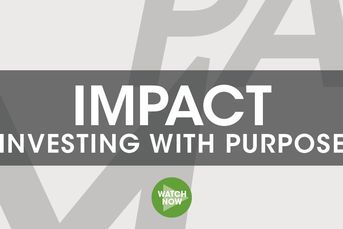Stock funds lure cash as investors chase rally
Investors are pouring more money into stock mutual funds in the U.S. than they have in 13 years, attracted by a market near record highs
Investors are pouring more money into stock mutual funds in the U.S. than they have in 13 years, attracted by a market near record highs and stung by bond losses that will deepen if interest rates keep rising.
Stock funds won $172 billion in the year’s first 10 months, the largest amount since they got $272 billion in all of 2000, according to Morningstar Inc. estimates. Even with most of the cash going to international funds, domestic equity deposits are the highest since 2004.
The move marks a reversal from the the period of 2008-12, when investors put $1 trillion into fixed income as the financial crisis drove many to redeem stocks and miss out as the S&P 500 almost tripled from its low. Rare losses this year in core bond portfolios, coupled with a 25% gain in the S&P 500, spurred the switch back to equities, which some professionals call risky performance chasing.
“The timing of retail investors tends to be terrible,” said Jonathan Pond, an independent financial adviser in Newton, Mass., who oversees $200 million. The deposits may be a contrarian indicator of a market near a top, he said.
Jeremy Grantham, chief investment strategist at money manager Grantham Mayo Van Otterloo & Co., told clients in a letter this week, “We will have the third in the series of serious market busts since 1999.” BlackRock Inc. chief executive Laurence D. Fink said this month that stocks may decline as much as 15 percent because of political risks in China, Japan, France and the U.S.
EQUITY ALLOCATIONS
The market run-up has left investors as a group with an unusually high allocation to equities, at 57%, said Francis Kinniry, a principal at The Vanguard Group Inc., the world’s largest mutual fund company.
Equity allocations have been higher only twice in the past 20 years, Mr. Kinniry said — in the late 1990s leading up to the technology stock crash of 2000, and prior to the 2007-09 global financial crisis. He based his calculations on the total amounts of money in mutual funds and exchange-traded funds across asset classes at U.S. firms.
People shifting into equities “are jumping from one frying pan to another,” said Eric Cinnamond, manager of the $694 million Aston/River Road Independent Value Fund.
Intermediate-term bond funds, a category often used for primary fixed-income holdings, declined 0.9% in 2013 through Nov. 19, according to Morningstar. Fixed-income funds had net redemptions of $11.2 billion in this year’s first 10 months, the firm estimated.
STATEMENT SHOCK
Bonds have lost value since Federal Reserve Chairman Ben S. Bernanke in May raised the possibility that the U.S. central bank would begin scaling back its asset-buying program. The yield on the 10-year Treasury note rose to 2.79% Wednesday from 1.93% on May 21, the day before Bernanke first mentioned the idea of reducing monetary stimulus. Bond prices fall as rates rise. Pacific Investment Management Co., the biggest manager of bond funds, lost $39 billion to net withdrawals in the third quarter.
“People are rotating into stocks because they opened up their statements and saw losses in their bond funds for the first time in God knows how long,” said Michael Mullaney, who oversees $10.7 billion as chief investment officer for Fiduciary Trust Co.
Investors added $13.6 billion to stock mutual funds in the seven-day period ended Oct. 23, the most since early January, according to the Investment Company Institute. The $9.2 billion they put into funds that buy U.S. stocks that week was the highest total since weekly records began in 2007.
BULLISHNESS
Sentiment among individual investors grew increasingly positive as the S&P 500 set new highs. Bullishness in the American Association of Individual Investors’ weekly survey has averaged 43% this quarter, up from 29% in August and a long-term average of 39%.
Money managers have noticed the change.
“There is no doubt that people are moving further out the risk curve and it’s manifesting in the equity side of the house,” Henry Herrmann, CEO of Waddell & Reed Financial Inc., said on an Oct. 29 conference call for investors.
Greg Johnson, CEO of Franklin Resources Inc., told investors on a conference call last month that he was “encouraged by the improved flows to equity and hybrid strategies,” which saw their strongest deposits in three years. Hybrid funds buy both stocks and bonds.
Even so, some firms say the return to stocks is still modest.
“It doesn’t feel like the 1990s,” said Douglas Orton, vice president of MFS Investment Management, which oversaw $398 billion as of Oct. 31. In that decade, mutual-fund assets soared from less than $1 trillion to almost $7 trillion as rising prices fueled demand from households and retirement savers, according to the ICI.
Mr. Orton, whose firm regularly surveys individual investors to gauge risk appetites, said 38% of respondents to the latest questionnaire, taken in May, called asset growth their top priority, an increase from 30 percent in October 2012 while below the 60% level from before the financial crisis.
As a percentage of assets in stock funds, this year’s deposits are on par with those made in 2005-06, Morningstar’s data show.
Investors returning to stock funds may not be a bearish signal, based on historic patterns. In ICI data going back to 1984, annual mutual-fund flows turned positive twice before: in 1989, preceding market gains in eight of the next 10 years, and in 2003, when the S&P 500 kept rallying until October 2007.
The money hasn’t flowed to all equity-fund managers. Capital Group Cos. Inc.’s American Funds, the third-largest mutual fund firm in the U.S., had redemptions of $9.4 billion from its equity lineup in the first 10 months of 2013, Morningstar estimates.
For now, the gap between stock and bond returns is widening. The Barclays U.S. Aggregate Index, a common bond-fund benchmark, declined 1.4% this year through Nov. 19, headed toward its first loss since 1999.
Dismal fixed-income returns, and the potential for worse, are on clients’ minds, said Theresa Wan, a financial planner who advises individual investors in Dumont, N.J.
“People seem to realize that if they want their money to grow they have to be willing to take more risk,” she said.
(Bloomberg News)
Learn more about reprints and licensing for this article.







